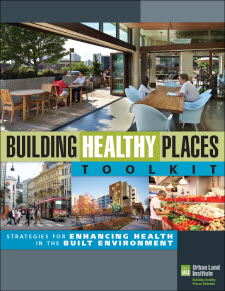 The Urban Land Institute and the Center for Active Design collaborated on toolkit of strategies for enhancing health at the building or project scale. In addition to healthy food and drinking water, healthy environments, and social well-being, the toolkit focuses on promoting physical activity through connected street networks and human-scale streetscapes that include high-quality pedestrian and bicycle infrastructure.
The Urban Land Institute and the Center for Active Design collaborated on toolkit of strategies for enhancing health at the building or project scale. In addition to healthy food and drinking water, healthy environments, and social well-being, the toolkit focuses on promoting physical activity through connected street networks and human-scale streetscapes that include high-quality pedestrian and bicycle infrastructure.
The toolkit recognizes that the design of transportation infrastructure has a direct impact on how extensively active transportation options such as walking and biking are used. A notable highlight of the toolkit is when communities that are designed to prioritize pedestrians, walking becomes a reliable mode of transportation with demonstrated health benefits. In addition, bicycling is recognized as an excellent form of exercise and an efficient, emission-free, mode of transportation --particularly for fewer than two miles. Bike lanes are supported as a means of promoting real and perceived safety for all street users and increasing levels of bicycling.